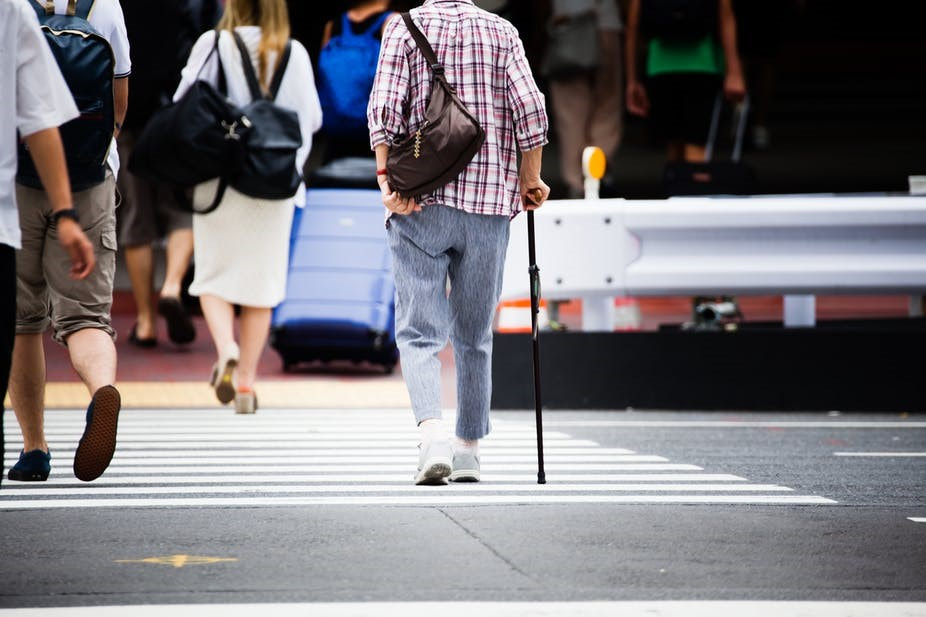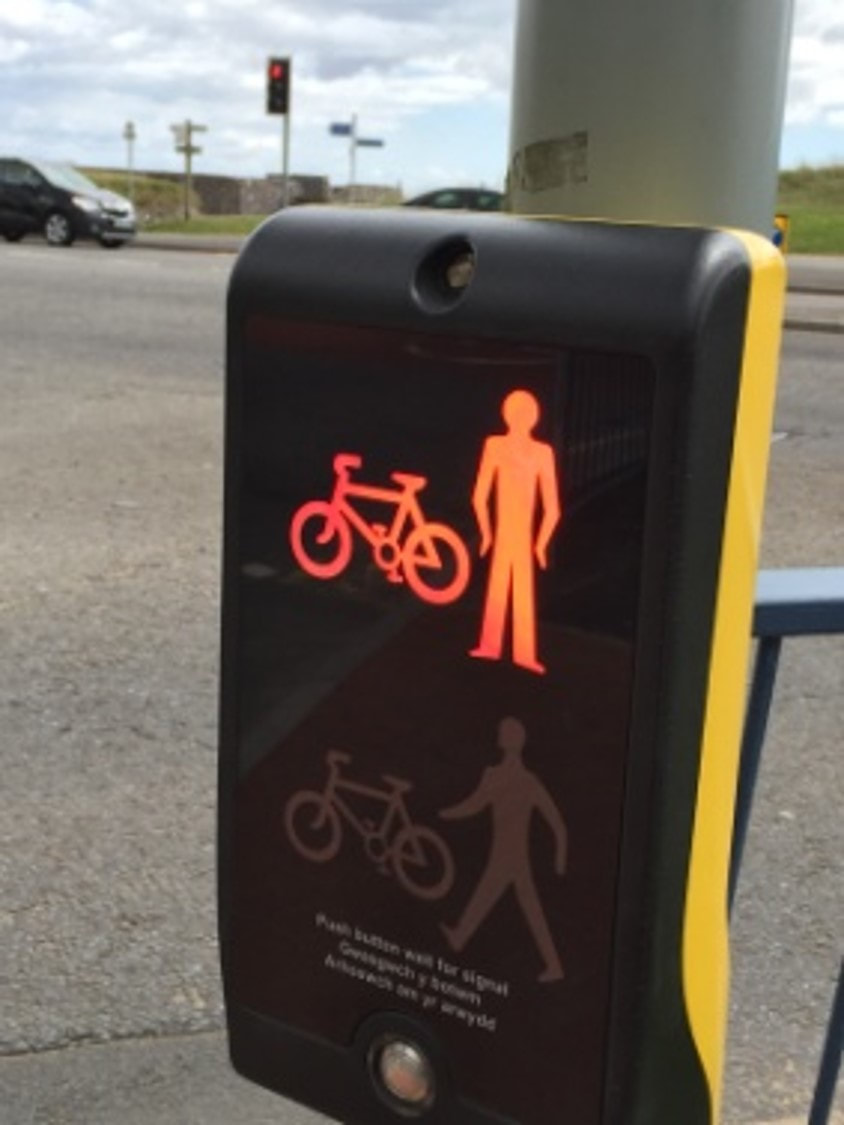- Home
-
Research Projects
- Community Hubs for Healthy Ageing (CHHA) Project
- A model of mobility capital for an ageing population
- Importance of a view from a window
- Age Friendly Railways
- Crossing the road in later life
- A model of an age friendly transport system
- Older people's travel and mobility needs
- Older driver safety
- Giving-up driving in later life
- A convivial public realm for older people
- Technological innovations and new mobilties: Attitudes and values of older people.
- Age Friendly Transport in Greater Manchester
- Other projects
- About me
- My PhD students
- Media Work
- Presentations
- Store
#
In the UK, there five types of crossing, each slightly different from the other: zebra, pelican, puffin, toucan and pegasus. The most common is the Pelican crossing, which is a traffic lighted crossing point with green and red phases for drivers and pedestrians. Government guidelines suggest that the time for the pedestrians’ green phase should be set at a walking speed of between one to 1.22 metres (around 4ft) per second – a speed found almost universally across the world. Despite this, the green phase for UK pedestrians is generally around four seconds, with a further six seconds of flashing green, giving people ten seconds to cross the road. My research has identified that this simply isn’t long enough. I found that 88% of people over 70 couldn’t cross the road given a time of 1.22 metres a second. For women, the statistic is even more stark: 94% couldn’t cross in this time. Those in poor health and, interestingly, those with lower socio-economic backgrounds walked much slower, making it harder for them to cross the road in time.
Previous research has found similar results, suggesting that older people’s average speeds are between 0.7 and 0.9 metres a second. What may be regarded as a trivial issue by some can actually be hugely detrimental to the lives of older people: anxiety over crossing times can stop older people going out, making them housebound, increasing sedentary behaviour, loneliness and isolation.
The Conversation article
Musselwhite, C.B.A. (2016). To keep older people active, pedestrian accessibility must improve. The Conversation, October 24th
Journal article
Musselwhite, C.B.A. (2015). Environment-person interactions enabling walking in later life. Transport Planning & Technology 38(1), 44-61
Presentations
Musselwhite, C.B.A. (2014). Environment-person interactions enabling walking in later life Proceedings of the 46th Annual UTSG Conference, Transport Operations Research Group, Newcastle University, 6th January
Musselwhite, C.BA. (2014). Pedestrian behaviour: Environmental-person interactions between environmental press and individual agency. 28th International Congress of Psychology, Paris, 11 July.
Poster
Older people and crossing the road
In the UK, there five types of crossing, each slightly different from the other: zebra, pelican, puffin, toucan and pegasus. The most common is the Pelican crossing, which is a traffic lighted crossing point with green and red phases for drivers and pedestrians. Government guidelines suggest that the time for the pedestrians’ green phase should be set at a walking speed of between one to 1.22 metres (around 4ft) per second – a speed found almost universally across the world. Despite this, the green phase for UK pedestrians is generally around four seconds, with a further six seconds of flashing green, giving people ten seconds to cross the road. My research has identified that this simply isn’t long enough. I found that 88% of people over 70 couldn’t cross the road given a time of 1.22 metres a second. For women, the statistic is even more stark: 94% couldn’t cross in this time. Those in poor health and, interestingly, those with lower socio-economic backgrounds walked much slower, making it harder for them to cross the road in time.
Previous research has found similar results, suggesting that older people’s average speeds are between 0.7 and 0.9 metres a second. What may be regarded as a trivial issue by some can actually be hugely detrimental to the lives of older people: anxiety over crossing times can stop older people going out, making them housebound, increasing sedentary behaviour, loneliness and isolation.
The Conversation article
Musselwhite, C.B.A. (2016). To keep older people active, pedestrian accessibility must improve. The Conversation, October 24th
Journal article
Musselwhite, C.B.A. (2015). Environment-person interactions enabling walking in later life. Transport Planning & Technology 38(1), 44-61
Presentations
Musselwhite, C.B.A. (2014). Environment-person interactions enabling walking in later life Proceedings of the 46th Annual UTSG Conference, Transport Operations Research Group, Newcastle University, 6th January
Musselwhite, C.BA. (2014). Pedestrian behaviour: Environmental-person interactions between environmental press and individual agency. 28th International Congress of Psychology, Paris, 11 July.
Poster
Older people and crossing the road


